Novel long noncoding RNA LINC02820 augments TNF signaling pathway to remodel cytoskeleton and potentiate metastasis in esophageal squamous cell carcinoma
- PMID: 36357564
- PMCID: PMC9935391
- DOI: 10.1038/s41417-022-00554-2
Novel long noncoding RNA LINC02820 augments TNF signaling pathway to remodel cytoskeleton and potentiate metastasis in esophageal squamous cell carcinoma
Abstract
Esophageal squamous cell carcinoma (ESCC) is one of the most common malignant tumors in China. However, there are no targets to treat ESCC because the molecular mechanism behind the cancer is still unclear. Here, we found a novel long noncoding RNA LINC02820 was upregulated in ESCC and associated with the ESCC clinicopathological stage. Through a series of functional experiments, we observed that LINC02820 only promoted the migration and invasion capabilities of ESCC cell lines. Mechanically, we found that LINC02820 may affect the cytoskeletal remodeling, interact with splice factor 3B subunit 3 (SF3B3), and cooperate with TNFα to amplify the NF-κB signaling pathway, which can lead to ESCC metastasis. Overall, our findings revealed that LINC02820 is a potential biomarker and therapeutic target for the diagnosis and treatment of ESCC.
© 2022. The Author(s).
Conflict of interest statement
The authors declare no competing interests.
Figures
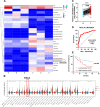
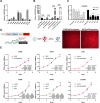
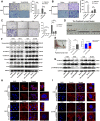
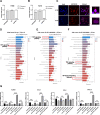
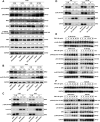

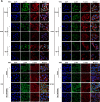
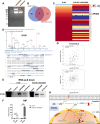
Similar articles
-
Long noncoding RNA GK-IT1 promotes esophageal squamous cell carcinoma by regulating MAPK1 phosphorylation.Cancer Med. 2022 Dec;11(23):4555-4574. doi: 10.1002/cam4.4795. Epub 2022 May 24. Cancer Med. 2022. PMID: 35608100 Free PMC article.
-
ZFPM2-AS1 facilitates cell growth in esophageal squamous cell carcinoma via up-regulating TRAF4.Biosci Rep. 2020 Apr 30;40(4):BSR20194352. doi: 10.1042/BSR20194352. Biosci Rep. 2020. PMID: 32065218 Free PMC article.
-
Long noncoding RNA SNHG12 induces proliferation, migration, epithelial-mesenchymal transition, and stemness of esophageal squamous cell carcinoma cells via post-transcriptional regulation of BMI1 and CTNNB1.Mol Oncol. 2020 Sep;14(9):2332-2351. doi: 10.1002/1878-0261.12683. Epub 2020 Jun 18. Mol Oncol. 2020. PMID: 32239639 Free PMC article.
-
Long non‑coding RNA BANCR promotes proliferation, invasion and migration in esophageal squamous cell carcinoma cells via the Raf/MEK/ERK signaling pathway.Mol Med Rep. 2021 Jun;23(6):465. doi: 10.3892/mmr.2021.12104. Epub 2021 Apr 21. Mol Med Rep. 2021. PMID: 33880577 Free PMC article.
-
Long non‑coding RNA MEG3 suppresses epithelial‑to‑mesenchymal transition by inhibiting the PSAT1‑dependent GSK‑3β/Snail signaling pathway in esophageal squamous cell carcinoma.Oncol Rep. 2020 Nov;44(5):2130-2142. doi: 10.3892/or.2020.7754. Epub 2020 Sep 7. Oncol Rep. 2020. PMID: 32901893 Free PMC article.
Cited by
-
Non‑coding RNA: A promising diagnostic biomarker and therapeutic target for esophageal squamous cell carcinoma (Review).Oncol Lett. 2024 Apr 9;27(6):255. doi: 10.3892/ol.2024.14388. eCollection 2024 Jun. Oncol Lett. 2024. PMID: 38646493 Free PMC article. Review.
-
The Long Noncoding RNA LINC02820 Promotes Tumor Growth and Metastasis Through Regulating MYH9 Expression in Esophageal Squamous Cell Carcinoma.MedComm (2020). 2025 May 23;6(6):e70218. doi: 10.1002/mco2.70218. eCollection 2025 Jun. MedComm (2020). 2025. PMID: 40416600 Free PMC article.
-
LOXL1-AS1 inhibits JAK2 ubiquitination and promotes cholangiocarcinoma progression through JAK2/STAT3 signaling.Cancer Gene Ther. 2024 Apr;31(4):552-561. doi: 10.1038/s41417-024-00726-2. Epub 2024 Jan 24. Cancer Gene Ther. 2024. PMID: 38267625
-
An integrated analysis of dysregulated SCD1 in human cancers and functional verification of miR-181a-5p/SCD1 axis in esophageal squamous cell carcinoma.Comput Struct Biotechnol J. 2023 Aug 16;21:4030-4043. doi: 10.1016/j.csbj.2023.08.009. eCollection 2023. Comput Struct Biotechnol J. 2023. PMID: 37664175 Free PMC article.
-
LINC01305 and LAD1 Co-Regulate CTTN and N-WASP Phosphorylation, Mediating Cytoskeletal Reorganization to Promote ESCC Metastasis.Mol Carcinog. 2025 Apr;64(4):756-768. doi: 10.1002/mc.23885. Epub 2025 Jan 21. Mol Carcinog. 2025. PMID: 39835575 Free PMC article.
References
Publication types
MeSH terms
Substances
LinkOut - more resources
Full Text Sources
Medical

